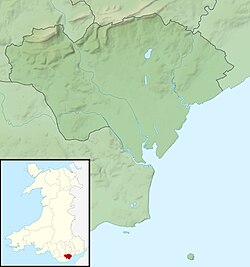| Caer Castell Camp Caer Castell Ring Motte | |
|---|---|
 The overgrown Caer Castell Camp | |
| Type | Motte and ditch [1] |
| Location | Rumney, Cardiff, Wales [1] |
| Coordinates | 51°31′00″N3°06′56″W / 51.51654°N 3.11557°W |
| Official name | Caer Castell Camp [1] |
| Reference no. | GM216 [1] |
Caer Castell Camp, also known as Caer Castell Ring Motte, is a medieval motte and ditch in Rumney in Cardiff, Wales, which is a scheduled monument. [1]
